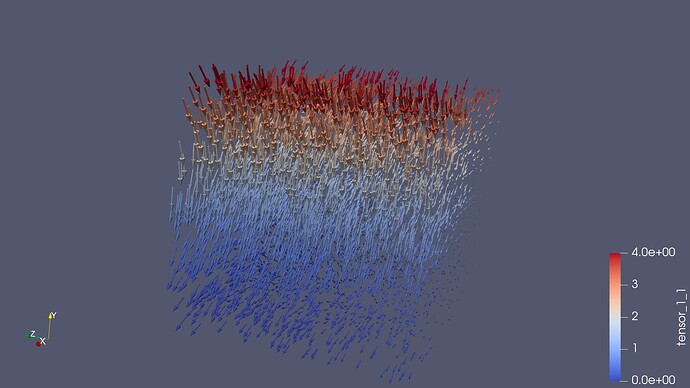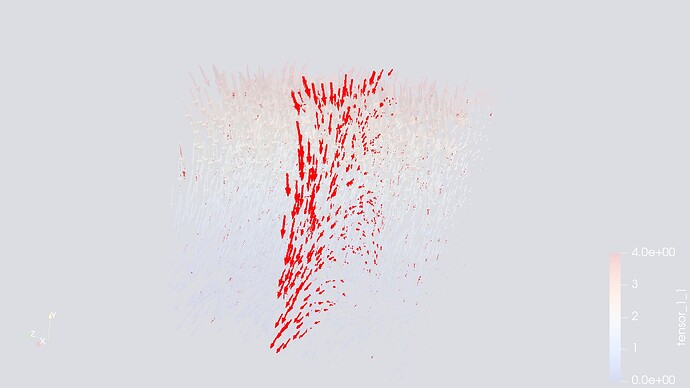I am trying to visualize a particle simulation with in-situ Catalyst2 support, and while it is correct on single core (produced image is consistent with what ParaView creates), in multi-core setting I am getting artifacts on processes boundaries:
1-core Catalyst visualization:
2-core Catalyst visualization:
3-core Catalyst visualization:
2-core vs 1-core images difference:
4-core vs 1-core images difference:
Some details about simulation:
- Data is list of particles, each particle has 3 properties - scalar, 3-dimensional vector, and 3x3 tensor (unrolled into 9 separate scalar properties in the Conduit node field setter). In the images, glyphs are oriented w.r.t. vector, colored w.r.t tensor[1][1], scaled w.r.t scalar.
- Problem persists in the absence of ghost cells. I have verified that if 1-core gets 64K particles, then 2-core get 2x32K, 4-core get 4x16K.
- I use the following Conduit Mesh Blueprint:
coords/type = explicit
mesh/type = unstructured
mesh/elements/shape = point
mesh/elements/connectivity = <index array from 0 to num_particles_local) - I have verified that in all 3 cases I pass correct coordinates and property values to Conduit nodes.





